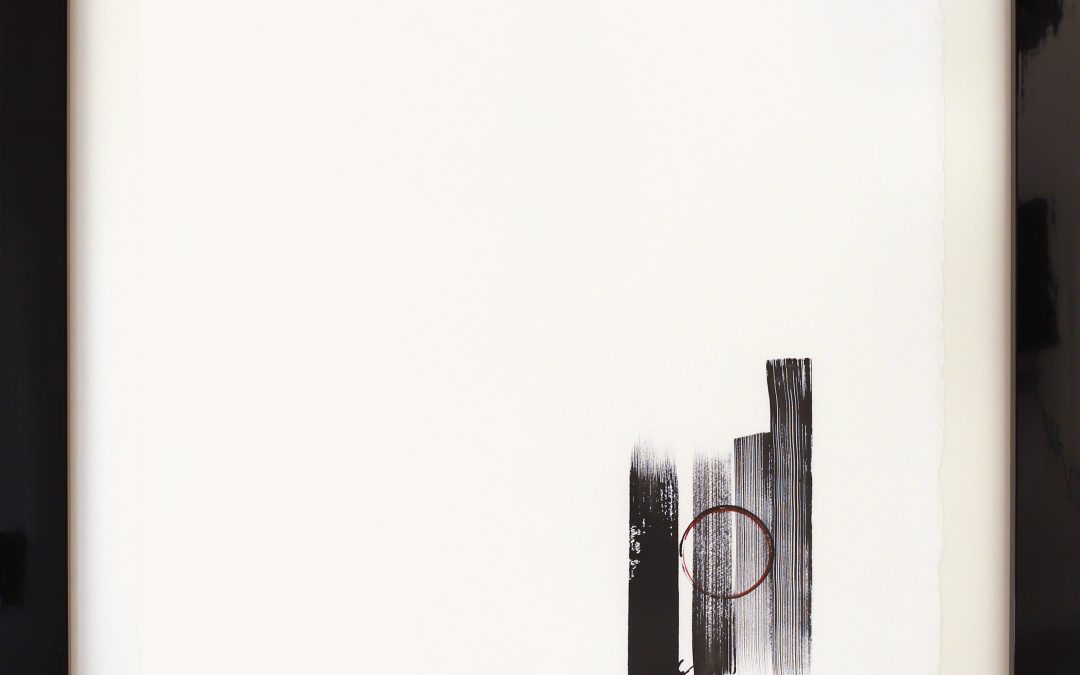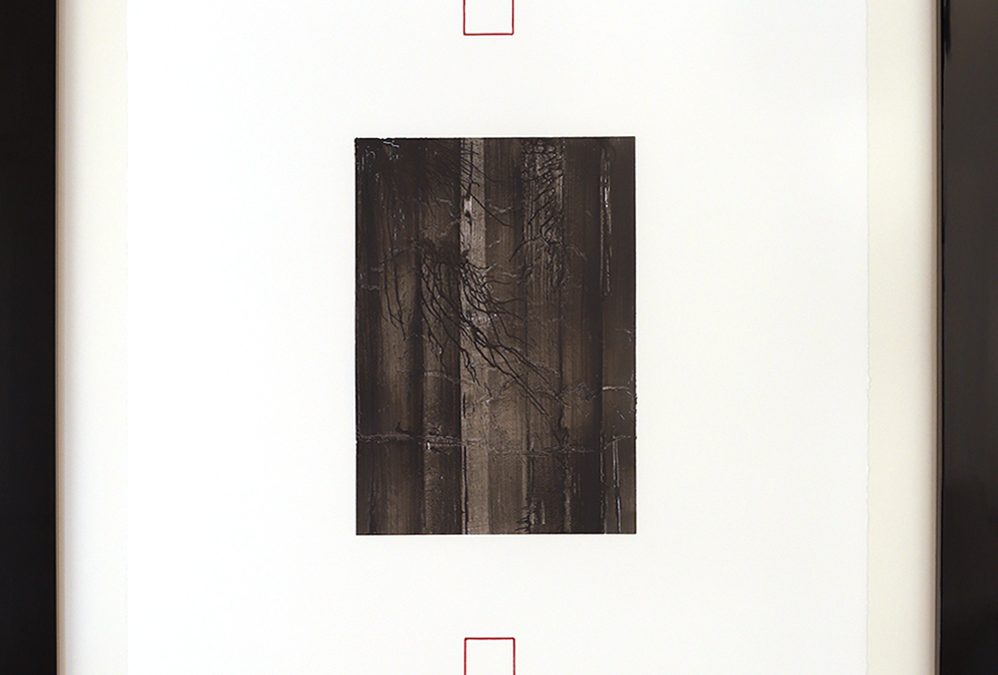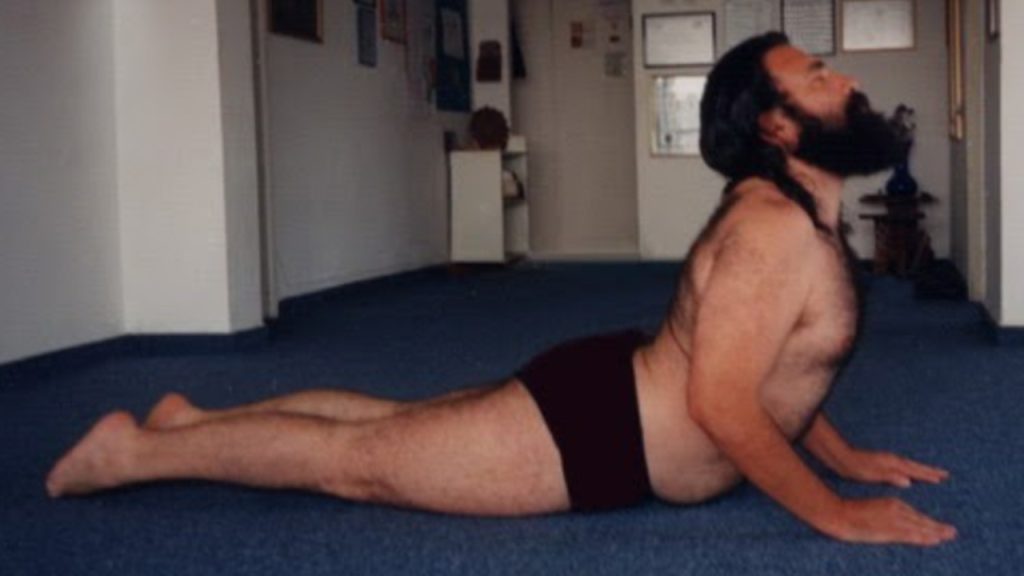
Dhyana – meditation
“To meditate is to know ourselves as emptiness. The experience of nothingness awakens us to the reality of our immortality. When the mind evaporates, the only thing that dissipates is conditioning, the legacy of innumerable generations. It is our mental conditioning that resists meditation; our false identification refuses to die. But when we transcend the mind, a reunion with life and with ourselves awaits us. Then we become fully conscious and absolutely blissful.”
(An excerpt from Prabhuji’s book: Experimenting with the Truth)
Generally speaking, rāja-yoga is considered the yoga of meditation. However, dhyāna is the essence of all types of yoga, as well as of religion, and not the exclusive property of just one of the many branches of Sanātana-dharma. Without meditation, true and authentic spirituality cannot exist.
tatra pratyayaikatānatā dhyānam
“Meditation is the uninterrupted flow of attention towards an object.” (Yoga-sūtras, 3.2)
We may observe a flower, a sunset, our breathing, the movements of our body, our thoughts or our feelings. Patañjali does not place emphasis on any particular object, but on the quality of attention, because what is essential in meditation is attentive and continuous awareness of all that can be observed or objectivized.
Meditation cannot be taught, as it is neither a method nor a technique, nor a physical, mental or emotional practice. Meditation does not consist in doing anything. Though it cannot be learned, dhyāna can be discovered in oneself, and solely by oneself, through attentive watchfulness. It does not arise as a result of study or learning, but blossoms from consciousness itself. To meditate is to place ourselves in the hands of God…it is to rest ourselves in the essence of what we are…since there is nothing we can do to be what we already are, always have been and always will be… the only thing we really can be.
Meditation can neither be purchased nor acquired. If a method were capable of guaranteeing such a result, it would be more important than meditation, enlightenment, or God Himself. Dhyāna simply occurs, happens, takes place. All sādhanā, practice or technique carries its own corresponding importance, but only as a preparatory step to create the appropriate situation for meditation to descend; never as a means of obtaining it. Just as with sleep, there is nothing we can do to make meditation happen, nor will meditation ever be the direct result of anything we do. We can buy a comfortable bed, disconnect the radio, draw the blinds, turn out the light, lie down and close our eyes, but we cannot make ourselves sleep. The simple fact of preparing the appropriate atmosphere provides no guarantee that we will be able to sleep. Sādhanā consists in extending our limits to the maximum, to the farthest point. Only when we have done everything we can, will it become possible for meditation to descend upon us.
It is not easy for us, educated and intellectual as we are, to accept that our actual state of consciousness is a kind of sleepwalking and that we don’t perceive life and the world as they are, but as they appear to us in our dream. Just as the acceptance of our ignorance is the beginning of wisdom, the first sign of meditation is accepting the fact that we are beings who are half-asleep. To meditate is not to open the eyes, but to awaken…it is not to look, but to see….
Trying to describe meditation to someone who has not meditated is like trying to explain colors to a person who is blind, or musical notes to someone who is deaf. Meditating is not complicated, it requires no effort; it is much simpler than what is generally thought. However, what is simple may become extremely complicated when it is verbalized. Meditation is indescribable to the human mind because it is an experience that transcends the limits of time, space and causality. In our normal, finite and limited cognitive state we are unable to grasp anything beyond these boundaries.
Whereas in concentration the mind focuses on an object, in meditation what is being observed is the mind; the observer becomes the observed.
Attention is the light of the soul that makes us aware of our actions, thoughts and emotions. In meditation, the meditator is the observed. In this way, we expand our awareness, directing our attention towards the observer, and regain consciousness of ourselves.
To meditate is to open the eyes of our soul and dare to look attentively and continuously.
To meditate is to separate ourselves from the mental contents and their confusion without coming into conflict with the mind. It is to observe what is, as it is, without making any effort, without judging and condemning, and without even reacting. It is to remain attentive and in utter stillness when faced with conflicts and contradictions. One of the most complicated steps on the spiritual path is the development of internal observation, which is an attentive awareness of the mind without criticizing, without judging. The reason for its complexity and its difficulty lies in its simplicity, and in the fact that it requires no effort.
Meditation is observation without any intervention from the mind; it is attention and watchfulness without the ego’s meddling.
As our observation grows stronger, we stop identifying with the mental activity, which gradually lessens until it ceases completely, since thoughts feed on our identification with them. Meditation begins with observation and culminates in a total absence of thoughts.
To meditate is to observe the movement of the waves on the surface from the stillness at the depths of the ocean. In this state of alertness and clarity, the hidden and concealed within us is innocently revealed and exposed.
Meditation is to consciously establish oneself and rest in silence. To meditate is to observe the thoughts without thinking about them. It is to discover the mystery that lies concealed behind the words, in the hidden regions, in the source and origin of the thought, in that pre-mental, virgin and uninhabited region.
It is indispensable to make proper use of the objective in our search for the subjective, since the former is the door that leads to the latter. In allowing the attention to flow continuously towards a single object, like a river flowing towards the ocean and merging with it, our subjectivity is exposed.
All that we see in this relative reality of names and forms is nothing but a diversity of waves, drops and foam… To understand what the ocean consists of, one need not bring the entire ocean into the laboratory and analyze each of its waves. If we are capable of observing a single drop with great attention, we will know the entire ocean… By analyzing ourselves —the essence of what we are— the infinite ocean of eternal bliss will be revealed to us… The Totality in the part, the solar system in an atom, the universe in a leaf, life in a blade of grass, existence in a grain of sand; God, dwelling within us as what we are. Meditation is self-discovery, the revelation of what is real in us, our authentic nature.
We listen, look, hear, touch… but behind each of these activities there is the sense of “doing”. Being conscious is not something that we do, just as the words imply. To be conscious we can only… be.
If we wish to allow meditation to happen, we must relinquish our accustomed roles as actors and doers, and adopt the perspective of a witness and observer, because meditation is the art of awareness, the art of attention, of observation…
And when we speak of consciousness in this expanded state of perception, we are always referring to the consciousness of oneself, of the Self, of Reality. When we are conscious of something —regardless of who or what —it is always, in essence, the consciousness of what we really are, the infinite and all-pervading Self.
Don’t meditate to obtain tranquility or peace, or to become more creative. Don’t meditate to develop your intelligence, or to reach God or enlightenment, because these are not products or results, but only the natural consequence of a meditative life. Don’t meditate “in order to”, or with the intention of receiving something or reaching some goal or ideal, however elevated and pure it may be. Any longing causes tension and becomes a serious obstacle to meditation.
Any expectation of obtaining something as a result or product of meditation directs us towards tomorrow, pulling us away from the present moment towards an illusory world.
Meditation is not a means through which we obtain some end, it is not a movement from here to reach somewhere else, it is not a path from yesterday to tomorrow. Rather, meditation is to transcend yesterday and tomorrow, here and there. To meditate is to leap outside of the concepts of space and time, to discover in the here, the infinite, and in the now, eternity…
A meditative life is a life in harmony with the natural state of consciousness, which is meditation, our authentic and original state, as is confirmed in the Chāndogyopaniṣad (7.6.1):
dhyānaṁ vāva cittād bhūyo
dhyāyatīva pṛthivī dhyāyatīvāntarikṣaṁ
dhyāyatīva dyaur
dhyāyantīvāpo dhyāyantīva parvatā
dhyāyantīva deva-manuṣyās
tasmād ya iha manuṣyāṇām
mahattām prāpnuvanti dhyānāpādāⓜśā
ivaiva te bhavantyatha
ye ‘lpāḥ kalahinaḥ piśunā
upavādinas te ‘tha ye prabhavo
dhyānāpādāśā ivaiva te bhavanti
dhyānam upāssveti
“Meditation is more than thoughts. The Earth seems to meditate. The Middle Plane seems to meditate. The Divine Plane seems to meditate. The waters seem to meditate. The mountains seem to meditate. The devas and human beings seem to meditate. Therefore, he who, among humans has greatness, seems to have attained the benefits of meditation. While the small people are quarrelsome, defamatory and offensive, the human beings who are great seem to have attained some part of the benefits of meditation. Therefore, meditate.”
Meditation is to discover ourselves. Up to now all that we know about ourselves is what others have taught us. However, to know about ourselves, we don’t need descriptions from others, but we only need to look directly at ourselves. When we meditate, we become aware that to elevate ourselves and reach paradise, it is essential to descend to our depths, because to descend to our interior is to excavate in the heavens, it is to deepen upward …..Meditation is the sacred art of submerging into the depths of our interior to emerge in God.
If we perform our daily activities with attentive observation, we can actually transform them, as simple and ordinary as they may seem, into meditation. Meditation consists of de-automatizing ourselves, of ceasing to act in an automatic or mechanical way. To meditate is not to do something, but to remain alert and watchful before each action, so that our actions become meditation.
(An excerpt from Prabhuji’s writings)
Watchfulness, or meditation, has a magic that makes all apparently solid things become subtle, evaporate, disappear. It’s like an acid. Ideas, concepts, fears, conclusions, and conflicts disappear with observation. And simultaneously, all that was subtle solidifies; the soul, the spirit, love, the Self, all become solid. Meditation is that transforming magic that transmutes waves into ocean, that makes us see that after all, the wave, the foam, and the bubbles are all water; that the conflicts, ideas, conclusions, and thoughts are ultimately consciousness. So differences, diversity, and multiplicity evaporate, leading us to awaken in the ocean of consciousness, and thus, consciousness solidifies.
(An excerpt from Prabhuji’s book: What is, as it is)



Recent Comments